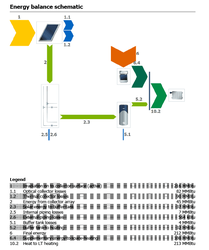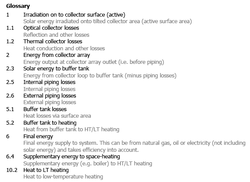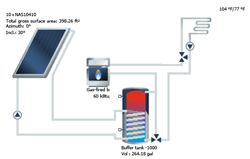"Puffing," a term given to an occasional downdraft puff of smoke from some boilers, more aptly describes the efficiency claims of some boiler mfrs.
Starting with the efficiency number, some claims relate to "burn efficiency," which I take to mean the % of energy in the unburned wood which through combustion is released as heat. IMO a good gasification boiler should be around 97-98% in this category. Some claims relate to transfer of the heat produced during combustiion to the water circulating through the boiler. Typical % here for a good gasification boiler might fall in the range of 83-86% or even a little better. The problem with this latter claim is that it may be based on a laboratory burn, with precise control of wood moisture content, wood split sizes, loading, flue temperature, air mix and other variables, all of which a user would have great difficulty duplicating. Also, one has to consider whether the claims are made on the high heat value or low heat value of wood, and I assume they are made based on low heat value.
That said, based upon some reasonable assumptions and weighed wood burns, I have calculated with a high degree of confidence efficiency at 86% [low heat value] for my Tarm in ability to transfer to water the heat from combustion, and I have posted this on the forum. At the same time, I operate my Tarm based on assumed 80% efficiency, as it takes some care and extra time to operate it in the most efficient manner that I can. I made a similar finding of 86% for a Garn WHS3200, but that was based on a calculated flow rate which added a significant element of uncertainty, and I calculated efficiency into the low 90% for a Wood Gun E500, but that too was based on a calculated flow rate which similarly added a significant element of uncertainty. A recent post for an Effecta also found 86% efficiency.
Who can you believe? I think the best info is from users who post data-backed findings on this forum. And if there are no posts from users based on data, I would view with skepticism claims by the mfr. I might surmise, however, that similar boilers from different mfrs employing similar burn technologies may be close in efficiency. I cannot make the same assumption concerning a boiler with a different burn technology. A mfr's use of the word "gasification" is not, IMO, adequate evidence of similarity in burn technology. Burn technology is design of firebox, design of the gasification chamber geometry and materials, heat exchanger tube design, and control of the air mix during the burn to the firebox and to the gasification chamber, and more.
What efficiency will you experience? Your ability to achieve a high level of efficient operation may not equal that of some experienced users who have reported findings based on data, but at least you should have some reasonable expectation of performance you could achieve if you get most things "right" in the use of the same or similar boiler.






